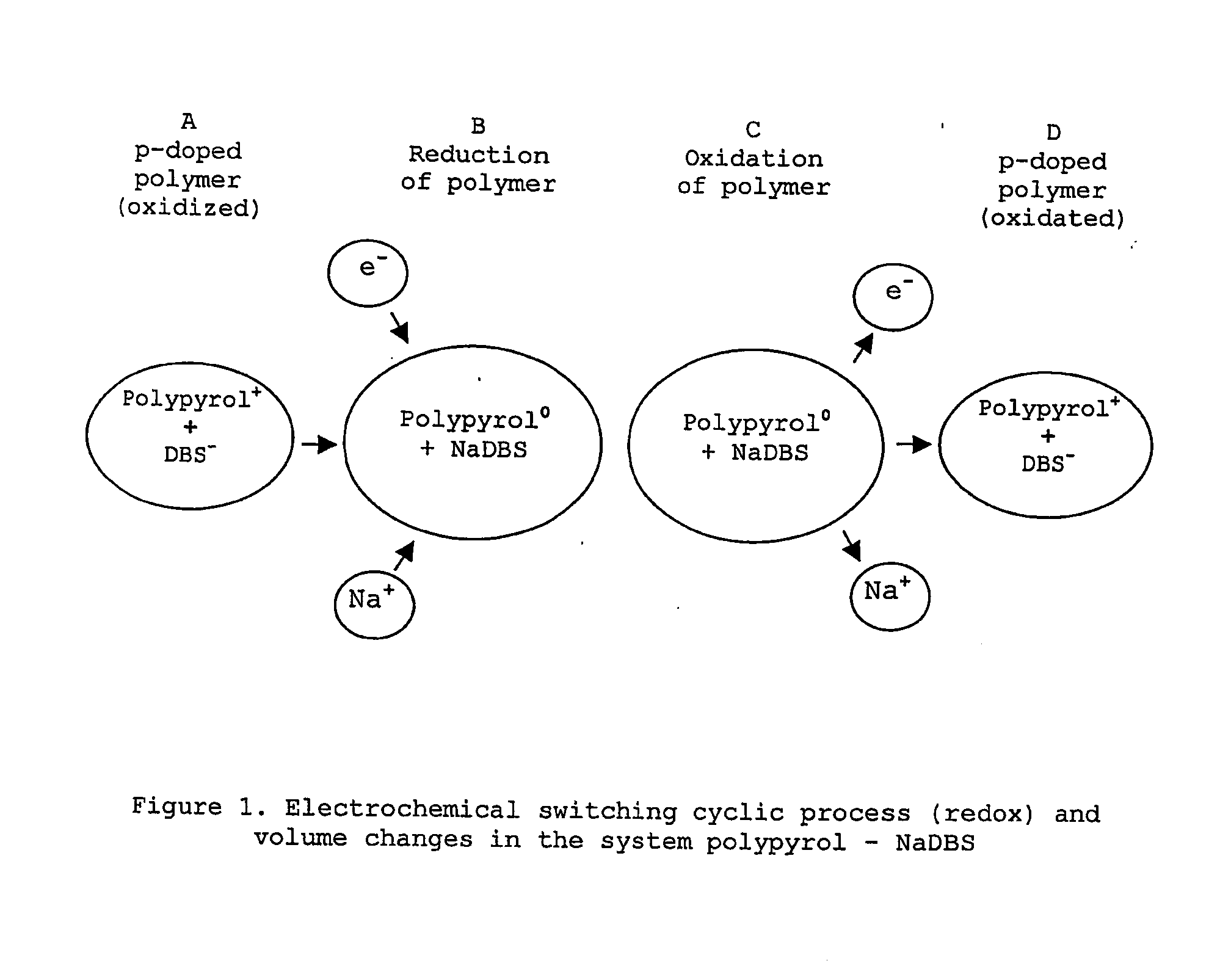Electromechanical Transducer
a transducer and electromechanical technology, applied in the direction of microelectromechanical systems, electrical apparatus, machines/engines, etc., can solve the problems of large displacement, high mechanical force, and high mechanical force of actuators at low voltage, and reduce the size of classical engineering designs only limited potential, and strain on crystals
- Summary
- Abstract
- Description
- Claims
- Application Information
AI Technical Summary
Benefits of technology
Problems solved by technology
Method used
Image
Examples
Embodiment Construction
OF THE INVENTION
[0095]Size of Particles—Equation (7)
[0096]The optimal radius of the spherical polymer particles in lukewarm water (H=5.10−21 J, T=310 K), with an utmost approach d0=0.424 nm (the thickness of two layers of ions Ca2+)
R*=27kTd0H=27×1.38×10-23×310×0.424×10-95×10-21=9.80×10-9m=9.8nm
[0097]Utmost van der Waal's Energy Change—Equation (8)
[0098]The relevant internal energy change for the space filling Φ=0.185 (spherical particles in the hcp lattice, DH / DC=0.5, equation (7))
ɛ*=Φπ67(kT)2(2Hd0)3=-0.185π×67(k×310)2(2×5×10-210.424×10-9)3=-150.652kJm-3
[0099]Complex Interaction Energy Change—Equation (9)
[0100]FIG. 8 depicts the interaction energy in dependence on the mutual distance of the spherical nanoparticles with radius R=10.5 nm, the relative permittivity in a water medium εR˜80 and the variable concentration of divalent ions according to the parameters on the graph.
[0101]Particles in the relaxation state are at the cations lower concentration 2E24 m−3, the spherical particle...
PUM
 Login to View More
Login to View More Abstract
Description
Claims
Application Information
 Login to View More
Login to View More - R&D
- Intellectual Property
- Life Sciences
- Materials
- Tech Scout
- Unparalleled Data Quality
- Higher Quality Content
- 60% Fewer Hallucinations
Browse by: Latest US Patents, China's latest patents, Technical Efficacy Thesaurus, Application Domain, Technology Topic, Popular Technical Reports.
© 2025 PatSnap. All rights reserved.Legal|Privacy policy|Modern Slavery Act Transparency Statement|Sitemap|About US| Contact US: help@patsnap.com



